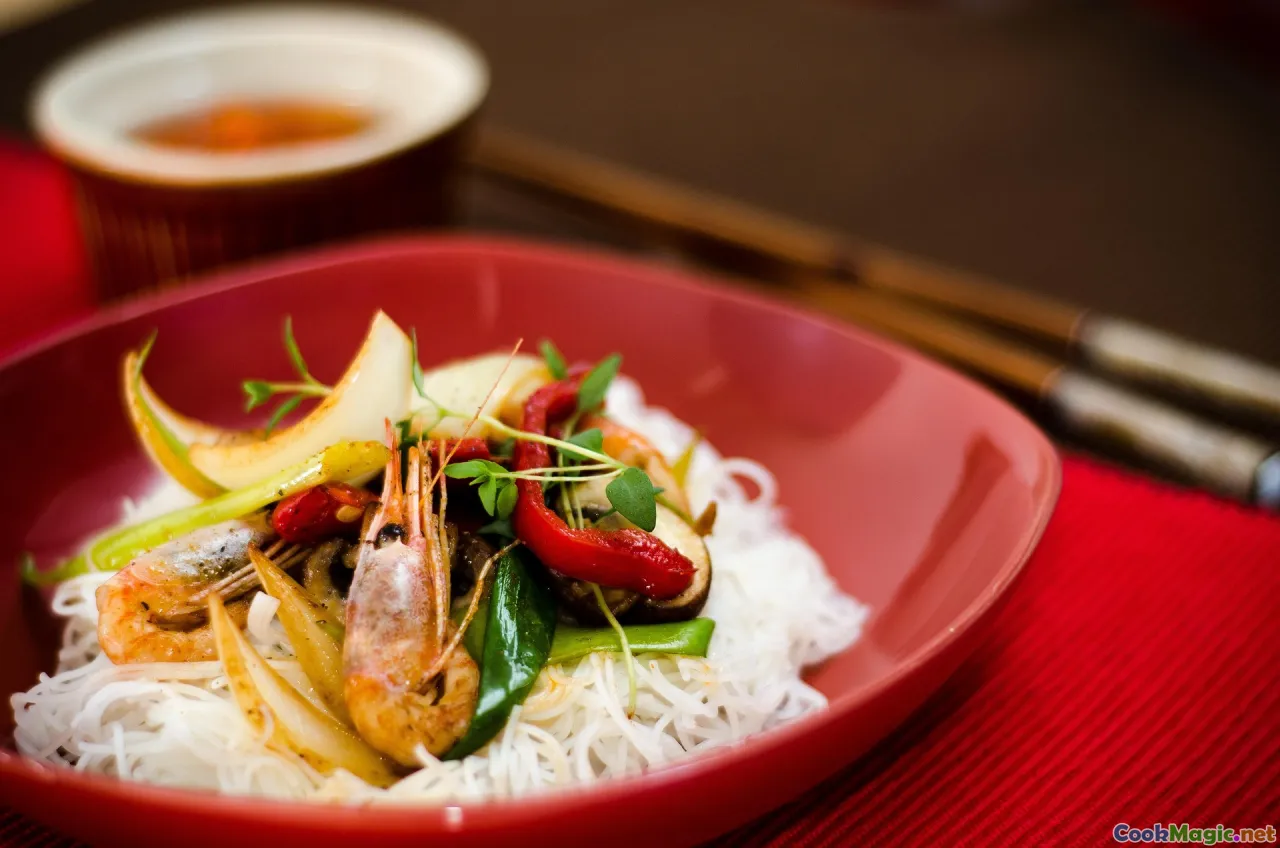The Importance of Rice Varieties in Southern Chinese Cuisines
8 min read Explore how diverse rice varieties shape the rich tapestry of Southern Chinese cuisines, influencing flavors, textures, and cultural traditions across the region. June 17, 2025 18:05
The Importance of Rice Varieties in Southern Chinese Cuisines
Imagine walking through the bustling streets of Guangzhou or the serene countryside of Guangxi, where the aroma of steaming rice wafts through the air, inviting you into a world where rice isn't just a staple—it's a cultural cornerstone. In Southern China, rice is more than a simple carbohydrate; it’s a living testament to centuries of agricultural innovation, regional identity, and culinary artistry.
The Heartbeat of Southern Chinese Food Culture
Southern Chinese cuisines, including Cantonese, Hakka, Teochew, and Guangxi styles, are renowned for their delicate flavors, vibrant textures, and masterful use of rice. Unlike the northern regions where wheat-based dishes predominate, the south’s lush delta plains and humid climate create an ideal environment for rice cultivation. Here, rice is intimately woven into daily life, festivals, and social rituals.
A Rich Tapestry of Rice Varieties
At the core of this culinary landscape lies a stunning diversity of rice varieties, each with unique characteristics that influence dishes in profound ways. From fragrant jasmine rice to sticky glutinous rice, the choice of rice is a deliberate decision that shapes the entire dining experience.
Long-Grain Aromatic Rice: The Fragrant Jewel
One of the most celebrated rice types in Southern China is jasmine rice, known locally as Ying Xiao Mi. Its slender grains and intoxicating floral aroma make it an ideal accompaniment for dim sum, seafood, and stir-fries. The jasmine rice's delicate texture and fragrant profile elevate simple dishes to culinary excellence.
Short-Grain and Medium-Grain Rice: The Sticky Sensation
In dishes like Zongzi(sticky rice dumplings) andLo Mai Gai (sticky rice chicken), medium and short-grain rice is preferred for its ability to clump together, creating a chewy, cohesive bite. These rice varieties are essential for the preparation of traditional festival foods and street snacks that evoke nostalgia and cultural pride.
Glutinous Rice (Sticky Rice): The Cultural Anchor
Perhaps the most iconic rice in Southern China is Glutinous Rice, or Nuomicirice, prized for its sticky, chewy texture. It’s the backbone of countless desserts and savory dishes, symbolizing unity and prosperity. Its versatility is evident in dishes likeSweet Rice Balls(Tangyuan) andSticky Rice Cakes, often enjoyed during celebrations.
Local Landraces and Specialty Rices
Beyond these staples, local landraces such as Mei Cai Xiang Mi(a fragrant rice from Meizhou) orLianzhou Rice (noted for its resilience and aroma) underscore regional differences. These varieties often have distinct flavors, textures, and cooking properties that reflect local terroir and farming practices.
From Field to Table: The Cultural Significance
Historical Roots
Rice cultivation in Southern China dates back over 4,000 years, with archaeological evidence pointing to early irrigation systems and sophisticated farming techniques. Over centuries, farmers selectively bred rice strains to suit local conditions, resulting in a diverse palette of varieties tailored for specific dishes.
Cultural Rituals and Festivals
Rice is central to festivals like the Dragon Boat Festival and the Lantern Festival, where traditional dishes such as sticky rice dumplings and rice cakes symbolize good luck and community bonding. The choice of rice directly influences the symbolism and flavor profile of these celebratory foods.
Personal and Family Traditions
In Southern Chinese households, the type of rice used often reflects family heritage and regional identity. A grandmother’s choice of fragrant jasmine rice for special occasions or the use of sticky rice for ancestral offerings embodies respect for tradition.
Culinary Techniques and Rice Preparation
The way rice is cooked in Southern China varies based on the rice variety and intended dish. Mastery over techniques such as steaming, boiling, and frying ensures that each rice type reaches its optimal texture.
- Steaming preserves aroma and texture, ideal for jasmine rice and delicate dim sum.
- Boiling is common for preparing rice porridge (Congee), a comfort food across the region.
- Fryingrice, as inYangzhou Fried Rice, involves pre-cooked rice that’s stir-fried with seasonings and ingredients, showcasing the rice’s ability to absorb flavors.
Personal Reflections and Anecdotes
Having traveled extensively through Guangdong and Guangxi, I’ve witnessed firsthand how the local farmers take immense pride in selecting the right rice for their dishes. I remember tasting a bowl of freshly steamed jasmine rice in a small village near Guilin, where the grains were so fragrant that they seemed to carry the essence of the surrounding lush mountains. The sticky rice dumplings from a street vendor in Foshan, with their perfectly chewy texture and subtle sweetness, encapsulate centuries of culinary tradition.
In my own kitchen, I’ve come to appreciate how the choice of rice transforms a simple stir-fry into a symphony of aroma and texture. Using fragrant jasmine rice for a seafood fried rice accentuates the oceanic freshness, while sticky rice lends an authentic touch to homemade Zongzi during the Dragon Boat Festival.
The Future of Rice in Southern Chinese Cuisine
As global demand for sustainable and high-quality rice grows, Southern Chinese farmers and chefs are innovating while honoring tradition. Organic farming practices, heirloom varieties, and rice breeding programs aim to preserve this rich diversity.
Furthermore, chefs are experimenting with rice-based fusion dishes, blending traditional grains with modern culinary techniques to appeal to younger generations and international palates.
Conclusion
The varieties of rice in Southern Chinese cuisines are more than ingredients; they are living expressions of history, culture, and regional identity. Each grain tells a story—of climate, soil, tradition, and community. Recognizing and appreciating this diversity deepens our understanding of Chinese culinary artistry and invites us to savor every bite with reverence and curiosity.
Next time you enjoy a bowl of fragrant jasmine rice or a sticky rice dumpling, remember: you’re partaking in a centuries-old tradition that celebrates the humble yet profound importance of rice in shaping Southern China's vibrant food culture.









